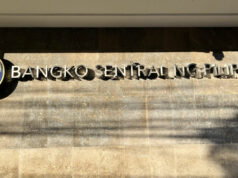From Camarines Sur to Christian Louboutin
DREAMS do come true, and if they can do it, so can you. International fashion designer Christian Louboutin swung by Manila late last year, and a few months after, came up with a collection of bags inspired by his trip. His bag and shoe designs fondle the hands and feet of the world’s most famous. This recent collection, called Manilacaba, features Philippine textiles and other elements of our culture. In one of the bags is featured a piece of embroidery from a third-class municipality, Baao, in Camarines Sur.
The designer who executed this piece, a tiny mandala, is Bernadette de los Santos, who has a brand called FARM by bidibidi. FARM stands for Fabuously Absolutely Rural-Made, and from her workshop in her small town, she manages to distribute her bags in stores from Manila to Cebu, even landing in the hands of Miss Universe Pia Wurtzbach.
This is all because of Manila FAME, which jump-started her venture after just beginning in August last year. As for her work being featured by an international designer, she says that it comes from her work with the Great Women project, which is a public-private partnership with the Philippine government and the Canadian International Development Authority (GREAT standing for Gender-Responsive Economic Actions for the Transformation of Women).
Ms. De los Santos’ first started working on keychains and such back in 2009. She is also a painter, and, after coming back from an exhibition in the US, she noticed that workers on her farm — including herself — would experience a lean period between planting and harvest. To supplement the farm’s income during these months, she trained some of her workers in weaving and embroidery. They weave mostly with grasses, because the farmers once saw them as weeds, and reworking them into crafts became a sustainable way to get rid of the weeds. It is a form of environmental activism, as well as a way to preserve culture by reintroducing local materials to crafts. “When tradition gets killed by technology, for example, the community loses its heart,” she said.
The brand also works as a social enterprise, where a certain portion of the profits goes back to training more weavers and embroiderers, as well as providing scholarships to deserving students. Ms. De los Santos recalls that in the enterprise’s early days, when they were doing small items, P5 set aside from every sale was enough to send 12 children to school.
Ms. De los Santos compared her paintings to her needlework, saying, “I don’t think one is greater than the other, but one is nobler. When I use paint, it’s only for me. It’s very selfish, in a way. But when I transform my art into an embroidered piece, then a lot of women can get involved.”
More than providing a means for women in her community to express themselves and make gainful income, she says that her fondest contribution was giving them confidence. “They’re no longer shy; they dress up better than before. I think the more important thing is that they build their confidence… and believe that they can contribute to improving the lives of their families,” she said. “When we educate women, it goes on to their children and their friends.”
As mentioned earlier, Ms. De los Santos works mostly with natural materials, especially organic material like grass, which, in one way or another, will rot and fall apart. “I want things to perish. I don’t want plastics that do not perish. Eventually, the materials that we use will biodegrade themselves,” she said. The items thus summarize the process of life and nature, a constant cycle of living, blooming, then perishing.
“It’s replicating nature,” she said, nodding at a keychain she made, executed in fresh green grasses then woven with green raffia and cotton. Soon, the fresh grass will dry up and turn brown, and the raffia and cotton will form into veins within the leaf. “Everything goes back to being part of the Earth.” — Joseph L. Garcia



